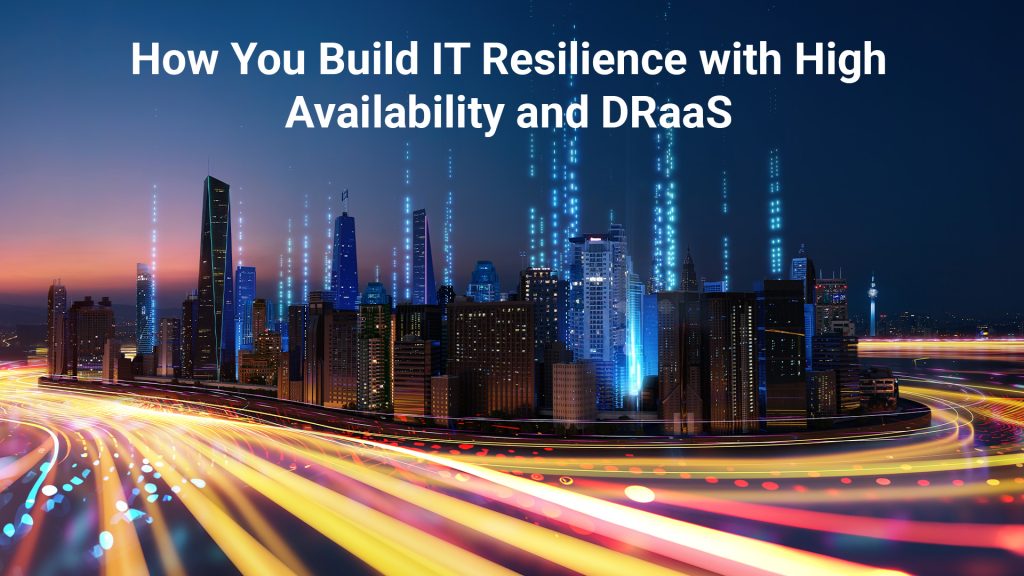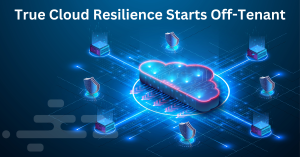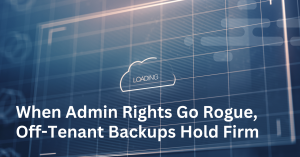These days, threats to your IT systems can appear without warning. Cyberattacks like ransomware and DDoS attacks, natural disasters, cloud outages, and even simple system failures can all disrupt your business and lead to significant losses. Downtime doesn’t just affect profits—it can also damage your reputation and customer trust. To keep your operations running smoothly, you need strategies that prevent interruptions and help you bounce back quickly when issues arise.
Combining high availability and disaster recovery creates a strong defence against these challenges. This integrated approach ensures continuous operation and quick recovery from setbacks. Cloud-based disaster recovery-as-a-service (DRaaS) offers a modern solution that balances proactive prevention with swift recovery.
Understanding High Availability
High availability is all about designing systems that keep running without interruption. The aim is to prevent downtime by addressing potential failures before they happen. Key components of high availability include:
- Redundant Hardware and Software: Having backup components ready to take over removes single points of failure.
- Load Balancing: Distributing workloads across multiple systems prevents any one system from becoming overloaded.
- Failover Mechanisms: If a component fails, the system automatically switches to a standby component without missing a beat.
Implementing high availability minimizes downtime and keeps your business operations on track. That said, setting up high availability can be complex and may involve higher costs due to the need for extra systems.
Understanding Disaster Recovery
Disaster recovery focuses on getting your IT systems and operations back up after a significant disruption. It’s about having a plan to restore normalcy when unexpected events occur.
Key components of disaster recovery include:
- Backup Solutions: Regularly backing up data and storing it off site ensures you can recover information lost during an incident.
- Recovery Time Objectives (RTO) and Recovery Point Objectives (RPO): RTO and RPO define how quickly you need to recover and how much data loss you can tolerate. For example, a business with critical online services might aim for an RTO of 2 hours (maximum downtime) and an RPO of 15 minutes (maximum data loss), while a less time-sensitive business might have an RTO of 24 hours and an RPO of 1 day.
- Disaster Recovery Plan: A documented set of procedures guides your team in restoring systems and operations.
Regularly testing your DR plan is crucial to ensure its effectiveness. This includes various types of tests, such as tabletop exercises to walk through procedures, simulated failures to test specific components, and full failovers to practice a complete recovery. Testing should be conducted frequently and documented thoroughly to identify any gaps or weaknesses. Without proper planning, recovery times can be longer than you’d like.
How High Availability and Disaster Recovery Work Together
High availability and disaster recovery aren’t separate strategies—they complement each other. High availability focuses on preventing minor disruptions by keeping systems operational at all times. Disaster recovery prepares you for major events that can cause significant outages.
By integrating high availability and DR, you build a comprehensive IT resilience strategy. For instance, you might use redundant systems to prevent downtime during routine maintenance while relying on disaster recovery plans to recover from a natural disaster.
Balancing the costs and benefits of both strategies is crucial. Investing in high availability reduces the likelihood of downtime, while disaster recovery ensures you can recover when unexpected events occur. Optimizing investment in both areas helps keep your operations running smoothly.
The Role of Cloud-Based DRaaS in Modern IT Resilience
Disaster Recovery-as-a-Service (DRaaS) uses cloud technology to replicate and host servers and data. It offers a modern approach to disaster recovery that can enhance overall IT resilience.
Advantages of DRaaS include:
- Cost-Effectiveness: Pay-as-you-go models reduce upfront costs, making disaster recovery more accessible.
- Scalability: Easily adjust resources based on your needs without significant investments.
- Rapid Recovery: Cloud infrastructure enables faster recovery times and minimizes data loss.
- Geographical Redundancy: Storing data in multiple locations protects against local disasters.
DRaaS bridges the gap between high availability and disaster recovery by offering both proactive protection and swift recovery. It keeps your systems continuously available and allows you to recover quickly from disruptions.
Implementing DRaaS starts with evaluating which systems and data are most critical to your operations. Understanding your priorities helps you plan effectively and ensures that the most vital parts of your business are protected. Next, choose a provider that offers reliability, strong security measures, and compliance with relevant regulations.
Look for a partner who aligns with your needs and supports your business goals. Finally, confirm that the DRaaS solution integrates smoothly with your existing infrastructure. Check for compatibility to prevent any disruptions during the transition and to maintain seamless operations.
Challenges and Considerations in Adopting DRaaS
While DRaaS offers many benefits, there are challenges to keep in mind:
- Security and Compliance: Data encryption and regulatory compliance measures are necessary to protect sensitive information. Look for features like data encryption at rest and in transit, strong access controls, regular security audits, and compliance certifications (e.g., ISO 27001, SOC 2) to ensure your data remains protected.
- Vendor Dependency Risks: Avoid becoming too reliant on a single provider by having strategies in place for switching if needed.
- Performance Concerns: Be aware of potential latency issues and work with your provider to address them.
- Cost Management: Monitor usage to control expenses and prevent unexpected charges.
Emerging technologies also play a role in modern IT resilience. Immutable backups provide an extra layer of protection against ransomware by preventing data modification or deletion. Additionally, containerization and serverless computing offer flexibility and scalability, making it easier to deploy and recover applications. Staying informed about these advancements can further enhance your resilience strategy.
Final Thoughts
Threats to your IT systems can emerge at any moment, making a resilient IT strategy more important than ever. By combining high availability and disaster recovery and enhancing them with cloud-based DRaaS, you build a strong defence against both minor hiccups and major disruptions.
Now is the time to reassess your IT strategies and strengthen them to meet modern challenges. By staying vigilant and adapting to new threats, you can keep your business operational and competitive, no matter what comes your way.






